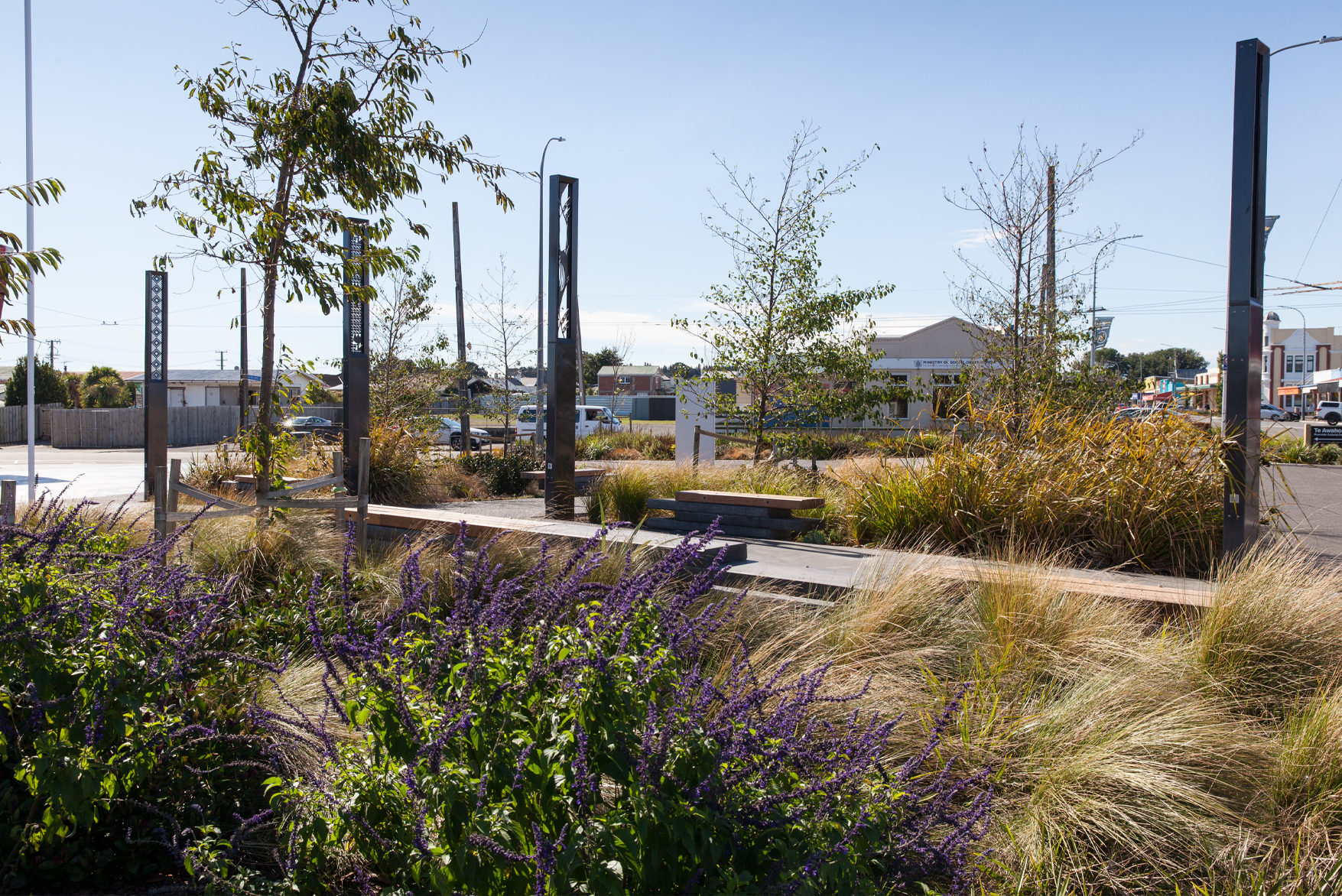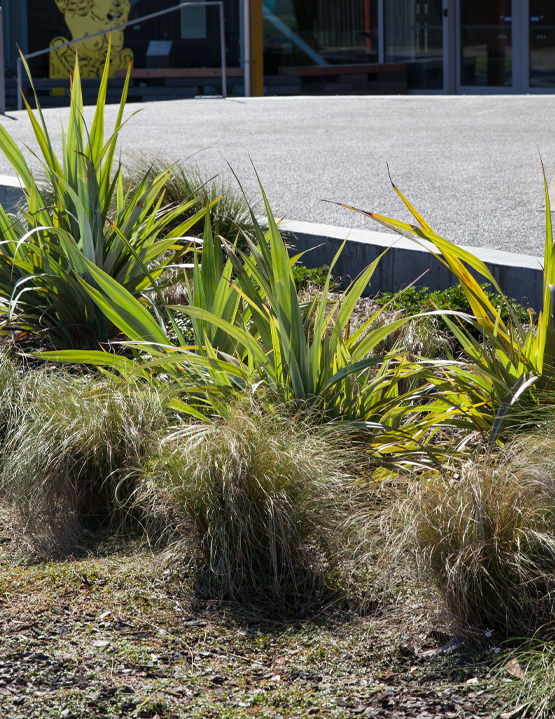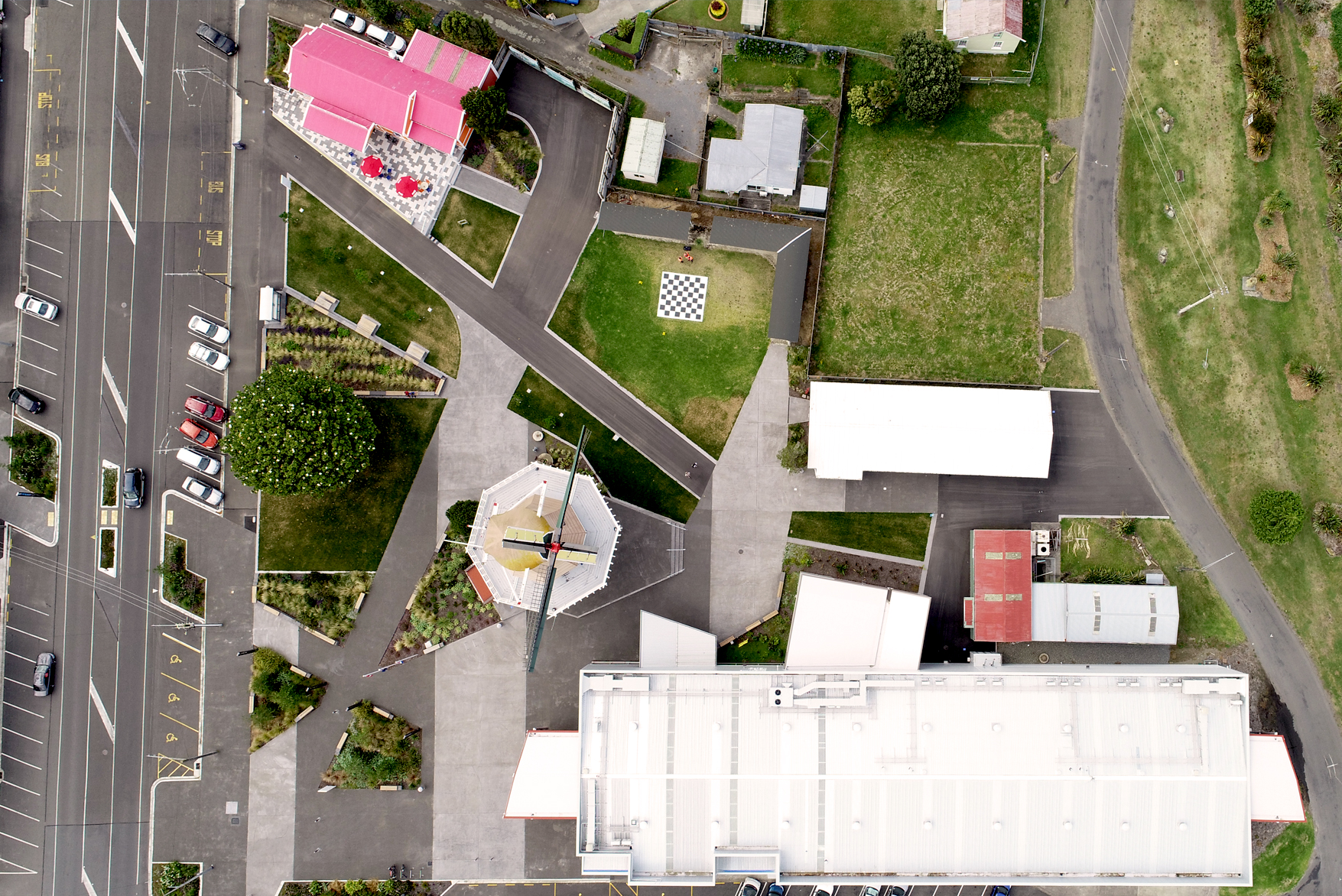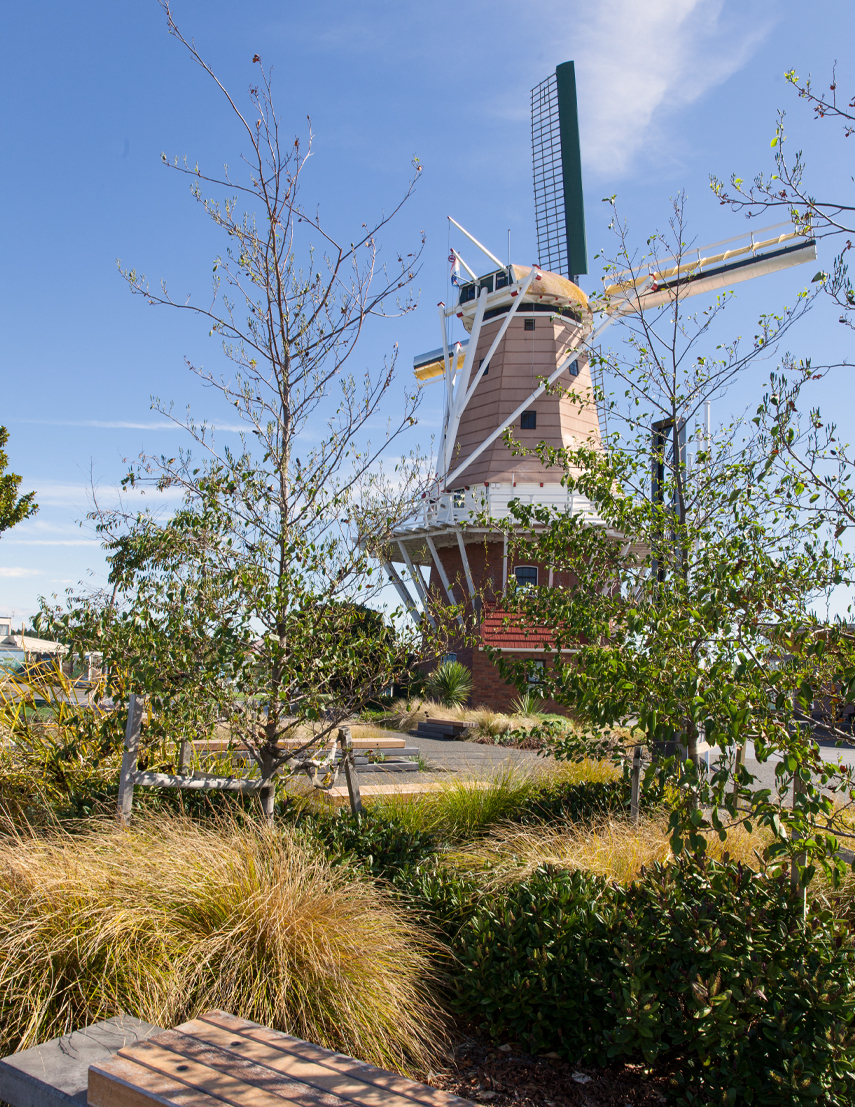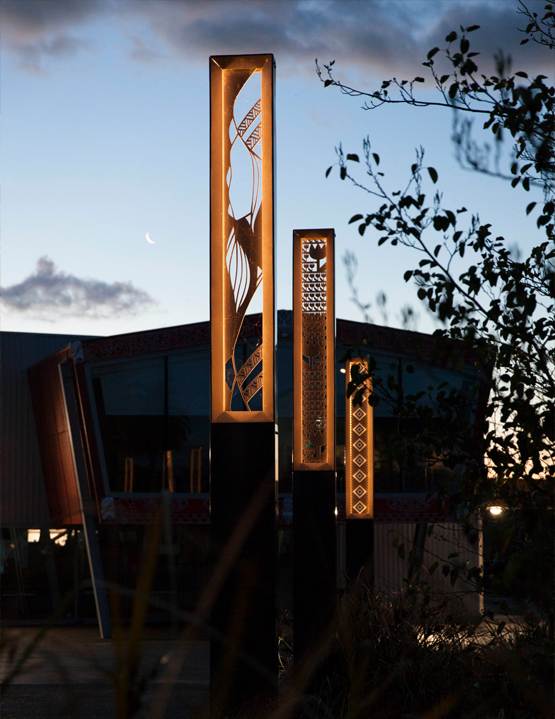Te Awahou Nieuwe Stroom now houses a Māori cultural heritage centre, a national Dutch museum and Foxton’s library and council services. The complex has been developed within the shell of an existing building, innovatively redesigned by Bossley Architects.
The surrounding open spaces complement and connect with the adjacent attractions, as well as providing connections from the redeveloped River Loop and historic river port to the main street. Sculptures played an important role in the design, particularly the vertical sculptures which connect the park to the Main Street and mark the cultural entrance into the park.
Boffa Miskell’s landscape architects created opportunities for the land to be a symbolic representation of weaving through the selection and planting of native and exotic species.
Native species are linked to the ecological district and plant community. The use of flax weaving cultivars, a selection of species found in the district, and the inclusion of European species demonstrates an expression of the sites natural and cultural context.
Due to the site’s proximity to the Manawatu River Loop and Ramsar site, stormwater is managed and treated through on-site rain gardens and large areas of turf lawns.
The Main Street upgrade and the Te Awahou – Nieuwe Stroom project are amongst a series of long-term community planning and revitalisation initiatives, led by the Horowhenua District Council, and aimed at transforming Foxton into a regional tourist centre. Boffa Miskell has assisted with developing the Foxton Town Plan and advice on River Loop ecological and recreational improvements.
